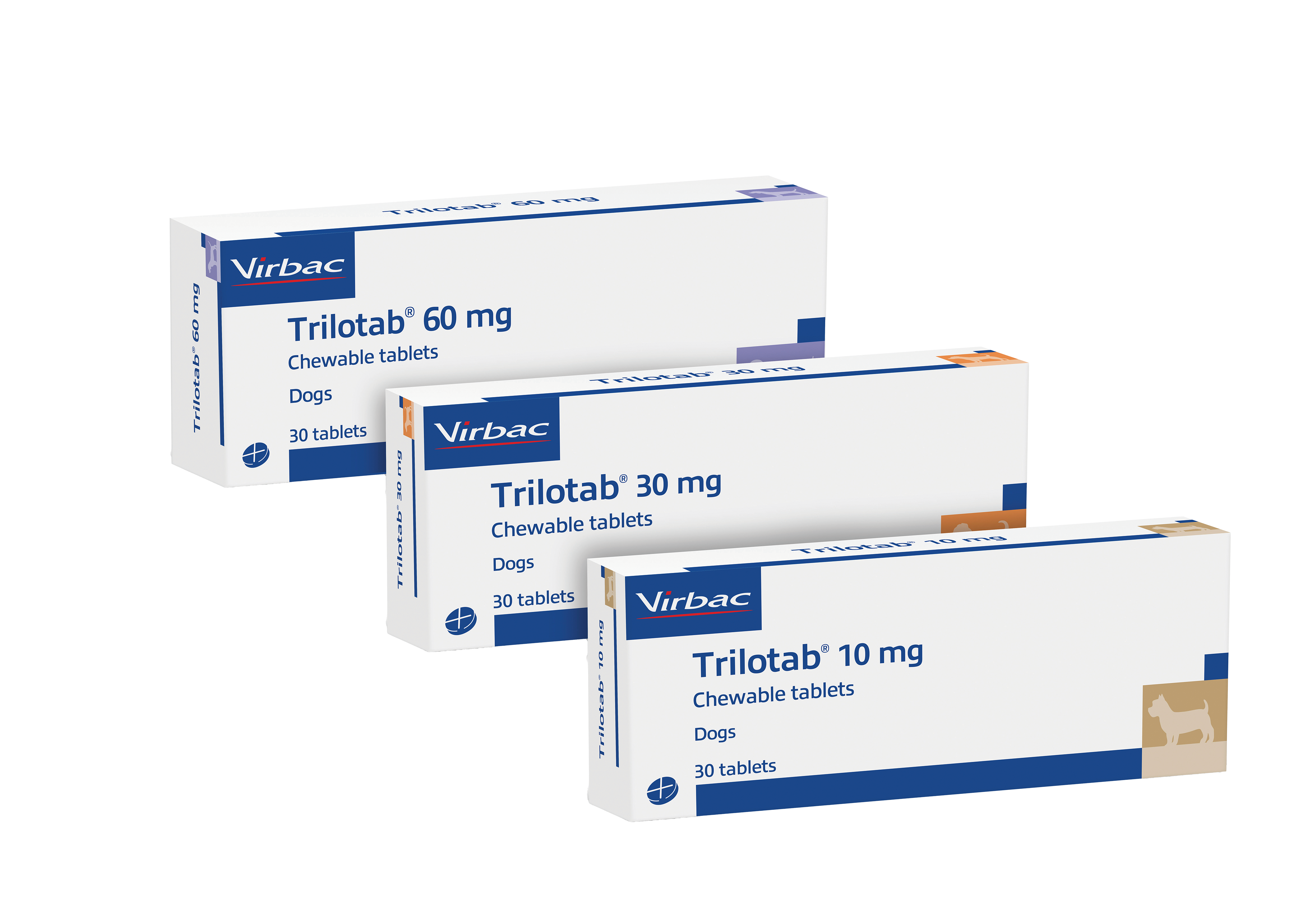Trilotab®, the First Chewable, Flavoured & Divisible Trilostane Tablet to Treat Cushing’s Syndrome in Dogs

Cushing’s syndrome, or hyperadrenocorticism (HAC), is one of the most common endocrine diseases in dogs, affecting approximately 1-2 dogs per 1,0001. It is often difficult to diagnose due to non-specific clinical signs and the lack of a single, highly accurate test. As a result the prevalence of the disease is expected to be much higher than reported.
Offering the flexibility to be precise, each Trilotab® tablet is divisible into halves and quarters to facilitate dose adjustment when tailoring the dose to each individual pet. It also enables easy administration and simplified, cost-effective dosing protocols for pet owners. Tablets are stable outside of the blister packaging until the next administration to avoid unnecessary wastage.
Trilotab® tablets are chewable and chicken flavoured to help improve treatment compliance and specifically utilise hydrolysed chicken flavouring to facilitate prescription in pets allergic to chicken.
Available in 10mg, 30mg, and 60mg presentations, Trilotab® also supports veterinary practices to reduce their dispensary stockholding by allowing precise dosing with just 3 presentations.
85% of spontaneous cases of Cushing’s are pituitary- dependant hypercortisolism (PDH) caused by an adrenocorticotrophic hormone (ACTH)-secreting pituitary adenoma; the remaining 15% of spontaneous cases are adreno-dependent hyperadrenocorticism (ADH) caused by a cortisol-secreting adrenocortical tumour (ACT)2. Trilotab® is licensed to treat both PDH and ADH.
Trilostane selectively and reversibly inhibits the enzyme system 3 beta hydroxysteroid isomerase, blocking the production of cortisol, corticosterone and aldosterone. Clinical improvement is usually seen within 2 weeks of starting treatment and in those dogs that respond to trilostane, adequate control is achieved within 30 days3.
‘The complex nature of Cushing’s syndrome in dogs can make it a challenging condition to manage for both the clinician and the pet owner’ said Andrew Connolly, Marketing Director – UK & Ireland at Virbac. ‘With the requirement for lifelong treatment, it is our hope that Trilotab’s easy administration and simplified dosing protocols will genuinely help to improve the lives of dogs affected by the disease, whilst making the clinician and pet owner’s lives just a little bit easier too!’
Trilotab® is administered once daily with food with a starting dose of 2mg trilostane/kg bodyweight. The individual response to treatment should be monitored and combinations of the easily divided tablets can be used to adjust the dose to the lowest necessary to control the clinical signs of the disease.
References:
1. Schofield I, Brodbelt DC, Niessen SJM, Church DB, Geddes RF, O’Neill DG. Frequency and risk factors for naturally occurring Cushing’s syndrome in dogs attending UK primary-care practices. J Small Anim Pract. 2022 Apr;63(4):265-274. doi: 10.1111/jsap.13450. Epub 2021 Dec 8. PMID: 34881823; PMCID: PMC9299886.
2. Sanders, K., Kooistra, H.S. and Galac, S. (2018) Treating Canine Cushing’s Syndrome: Current Options and Future Prospects. The Veterinary Journal, 241, 42-51. 3. Church, D. (2008) Drugs used in the treatment of adrenal dysfunction. In: Maddison, JE, Page, SW & Church. Small Animal Clinical Pharmacology:
W.B. Saunders, pp.517-527.
